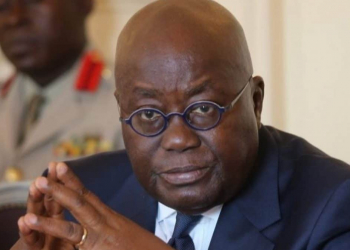The average interest paid on deposits in the banking sector have started climbing as banks bid to attract deposits from savers at a time cheap funds have become scarce.
The Bank of Ghana in its latest assessment of the interest rate regime in the country has found that the average interest on deposits hit 12.3 percent in May, which is an indication of the low liquidity on the financial market, forcing banks to pay increased rates in order to attract deposits.
The last time the central bank reported on deposit interest in the banking sector was in 2013 when the average interest rate on deposit was nine percent.
Currently, there are 30 banks in an economy of 27 million people and competition for deposits is heating up, leaving banks with no option but to pay more for deposits through high interest rates, which eventually will benefit consumers as they can now look to the banks for higher returns on their savings.
The data released by the central bank shows the five top banks that pay the best interest on deposits. This is expected to help consumers to shop around for the best savings account at a time hikes in interest rates on credits and on banks’ commissions and charges have become a great concern than ever, which requires consumers to have the right savings account in order to build a solid foundation for a financial plan.
According to the central bank, Capital Bank as of May this year pays 18 percent interest per annum on deposits, which makes it the highest in the banking sector followed by First National Bank and Bank of Baroda, which pay 16.1 percent and 16 percent respectively.
Stanbic Bank, which pays 15.5 percent interest on deposits and Fidelity Bank- 15.4 percent- complete the list of the top five high paying interests on deposits.
According to the central bank’s report, Standard Chartered Bank pays 4.3 percent interest on deposits, which is the least in the banking sector.
However, when it comes to borrowing, Standard Chartered Bank is one of the banks consumers can turn to as they have one of the lowest base rates- the minimum interest rate that can be charged on loans and advances- in the industry, only behind Bank of Baroda which boost a base rate of 16 per cent.
Standard Chartered Bank base rate is 18 percent with the highest base rate in the industry being that of Unibank- 40 percent.
Meanwhile, there has been a spike in the Annual Percentage Rate of banks, which is the true interest rate banks and non-bank financial institutions charge consumers on loans and advances as it reflects the true cost of borrowings and includes charges and commissions levied by banks.
According to the central bank, the average Annual Percentage Rate in the industry for vehicle loans is 32.4 percent, however, consumers can expect to access loans to purchase vehicle as low as 18.4 percent from Standard Chartered Bank while the highest could be accessed from Unibank, which charges consumers up to 45.8 percent on vehicle loans.
For mortgages, the industry average is 30.6 percent, but GN Bank has the lowest rates of 15 percent with Unibank having the highest band of at most 45.8 percent.
The Annual Percentage Rate of other consumer loans in the banking sector average 31.5 percent, yet it can range from the lowest of 18.4 percent charged by Standard Chartered Bank to highest rate of 45.8 percent from Unibank.
Borrowing for manufacturing activities could cost businesses at least 18.4 percent from Standard Chartered Bank and as high as 49.48 percent from Universal Merchant Bank. The average Annual Percentage Rate for manufacturing banking sector is 32.8 percent.
For agriculture purposes, the best bank for a credit facility is Standard Chartered Bank, which could charge farmers as low as 18.4 percent while the priciest could be accessed from Unibank at a rate of 45.8 percent. The state-owned adb, which was established for the purpose of agric financing, charges farmers’ 29 percent to access loans for agriculture. This is however, below the industry’s average of 31.3 percent.
The seemingly high cost of borrowing from banks is despite the fact that the central bank’s policy rate, which is expected to be the primary determinant of interest rates, has remained the same at 26 percent for the past six months — indicating that perhaps the cost of funds and heightened risk of loan default have gone up considerably, driving interest rate trends.
Sign up here to receive daily email alerts of breaking news in Ghana. GhanaStar.com is your source for all Ghana News. Get the latest Ghana news, breaking news, sports, politics, entertainment and more about Ghana, Africa and beyond.


